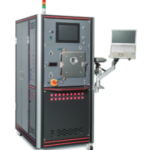Semiconductors are insulators, but with the addition of just a few specific impurities, they have the property of becoming conductors that conduct electricity.
Materials of ‘elemental semiconductors’, which are also made of a single element, include silicon, while those made of multiple compounds are called ‘compound semiconductors’.
Semiconductors are used in almost all machines and appliances.
It is of course also used in the computers, smartphones and tablets you see today.
Contents
Whether electricity is conducted or not is a matter of whether electrons can move or not.

Whether electricity is conducted or not depends on whether electrons can be moved.
The main conductors are metals such as iron, copper, silver, gold and aluminum, which have low resistance, because electrons can move easily.
The main insulators are oil, glass, rubber and ceramics with high resistance.
This means that the flow of electrons and other substances can be controlled by adding ‘conductor’ impurities to the ‘insulator’.
property change

Semiconductors, which have properties between those of insulators and conductors, have low resistivity depending on temperature.
It conducts little electricity at low temperatures, but when the temperature rises, it has the property of conducting electricity more easily.
Those with added impurities through which electrons pass, such as phosphorus, are called N (negative) type semiconductors, while those with added impurities without electrons are called P (positive) type semiconductors.
The use of N and P types can trigger the ‘rectifying effect’, where electricity flows or does not flow depending on the direction of the electric field.
Transistors are made of semiconductors.

A component that makes good use of the semiconductor mechanism is the transistor.
Transistors are components that control the flow of electricity and are so important that they can be said to be an absolutely essential component in semiconductors and are used in a wide range of machines.
You might say that ’transistors = semiconductors’.
’transistor’ is a coined word combining the words ’transfer’ and ’resistor’ .
How does the transistor work?
Any signal can be amplified many times over.
Electricity is flowed or stopped depending on the signal.
more detail
The “rectifying action” was used to control ON/OFF using the height of the wall by making the aforementioned N-type only so that electricity can flow and at the same time creating a “wall” with the P-type, due to the demand for “signal amplification” and other functions in telephones and the like.
This is the mechanism that allows the output to be amplified with a small electrical signal.
There are lots of silicones, the main raw material.

Silicon is the second most abundant element on earth after oxygen
It is found in soil, rocks, natural water, trees and plants, so it is a common element.
As silicon in nature cannot be used as it is, it is refined for the extraction of silicon elements.
In particular, the purity of silicon used in IC chips and other semiconductors is no ordinary matter, as it requires an “ultra-high purity single crystal structure” of “99.999999999%”
As silicon refining requires a lot of electricity, metallic silicon with a purity of 98% or higher, which has already been refined from Australia, China and Brazil, where electricity is cheaper, is imported.
Semiconductor industry leap

Next, many calculators were launched in Japan and there was a calculator war.
Thereafter, ICs made the leap to LSIs (with even higher integration of elements than ICs), followed by VLSIs (with even higher integration of circuit elements than LSIs) in the 1980s, ULSIs (with even higher integration of circuit elements than VLSIs) in the 1990s, and system LSIs (with multiple functions integrated into a single LSI) in the 2000s. In the 2000s, system LSIs (LSIs that integrate multiple functions into one, with simpler wiring than using multiple LSIs) were developed, making them smaller and more convenient.
What kinds of things are they used for?

It is used in almost all machines, from home appliances such as computers, smartphones, washing machines and refrigerators to cars, ATMs, trains, the entire communication infrastructure such as the internet and medical networks.
It is safe to assume that almost all semi-automatic and fully automatic systems have semi-conductors built in.
It is no exaggeration to say that it is thanks to semiconductors that you are able to enjoy this technological society. Thank you, semiconductors.
PS:
It takes several dedicated system processes, such as sputtering, to make semiconductors.
For more information, please contact us.





